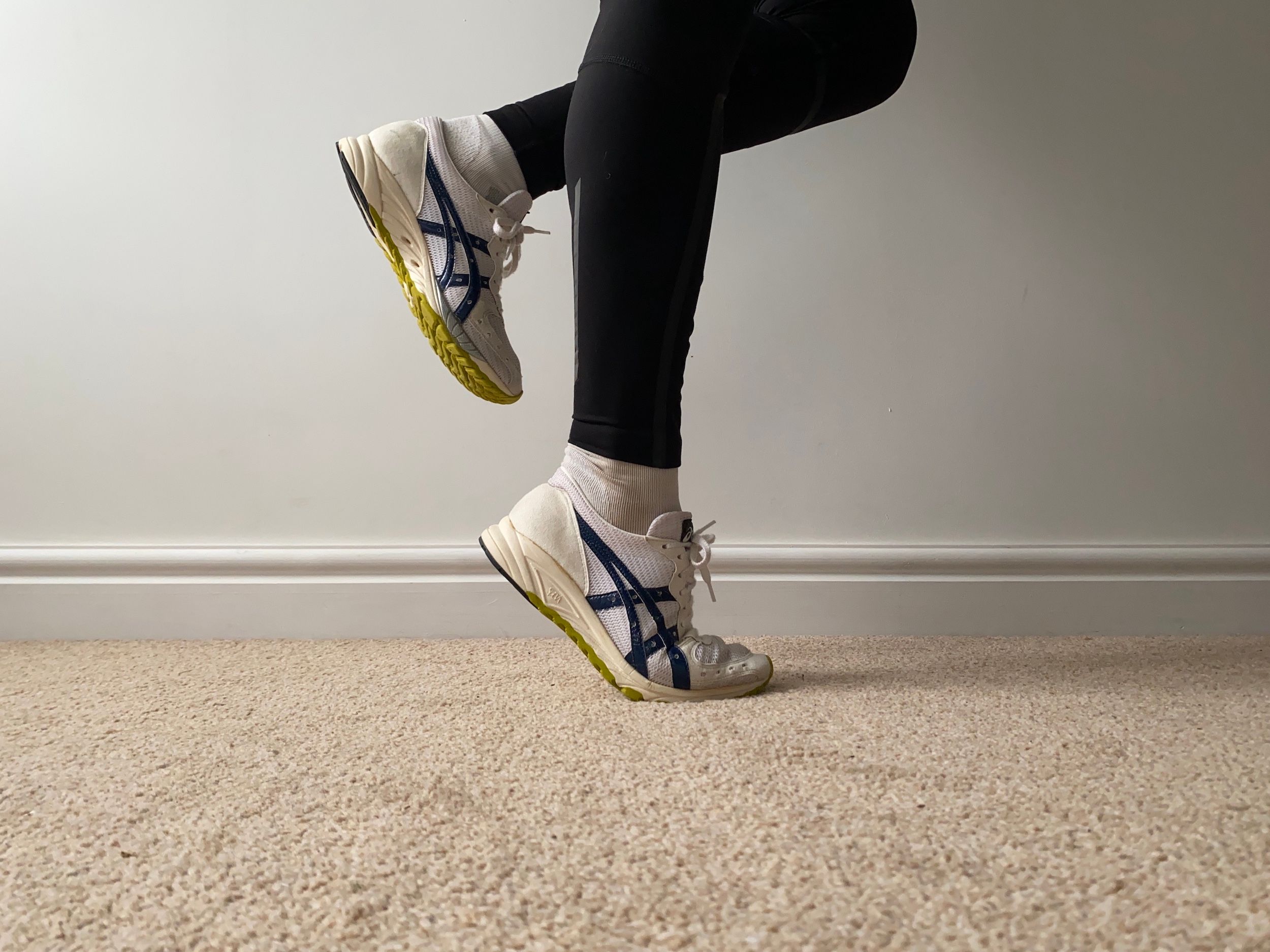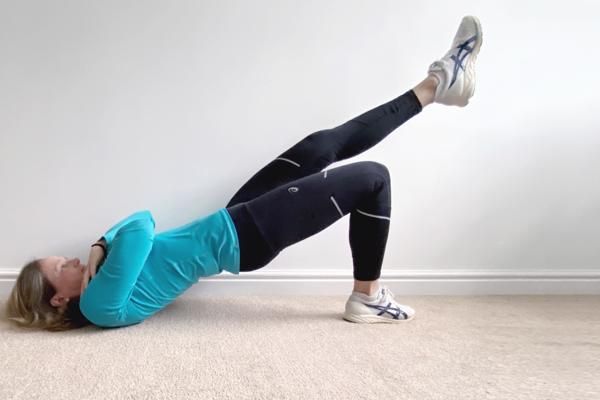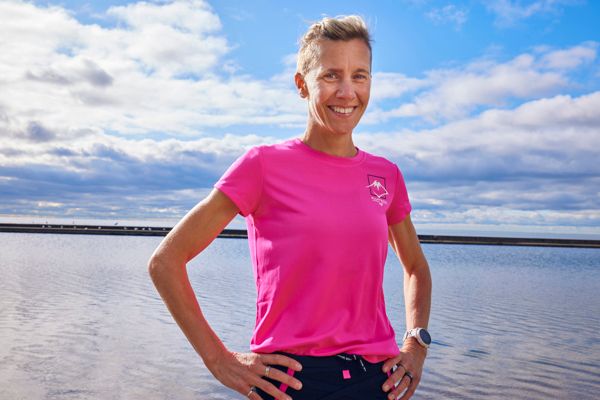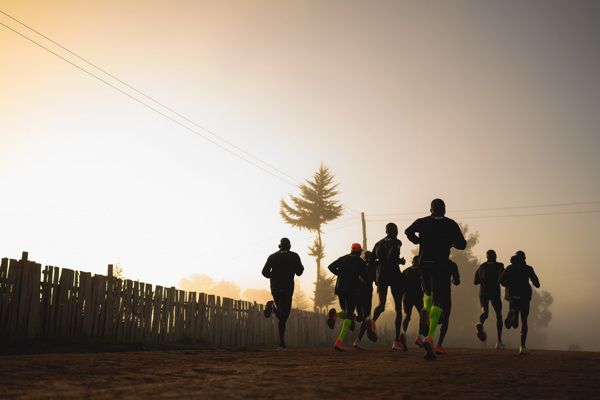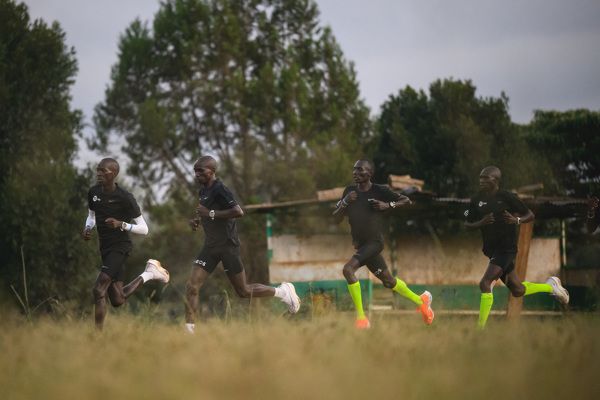Runner's heels
 Of all the injuries that are common in distance running, plantar fasciitis may be the most frustrating and debilitating.
Of all the injuries that are common in distance running, plantar fasciitis may be the most frustrating and debilitating.
A disorder of the plantar fascia – the thick connective tissue along the bottom of the foot – it often manifests as heel pain and is usually worst with the first few steps out of bed in the morning. It is frustrating because it often starts gradually, and your feet are the hardest part of your body to rest because staying off them disrupts daily life.
The pain is often relieved with warming up and exercise, so it frequently goes away while running. This can make you think the injury is less serious than it is, leading to more running on it which might make it worse. Like all tendon injuries, finding what makes it recover can be hit-and-miss, and can take time.
While training and competing as an elite athlete, I had plantar fasciitis several times. Sometimes it cleared up quickly; at other times it took many months. The positive outcome from this experience was that I learned a lot about treating, curing, and preventing it.
My top tips for managing plantar fasciitis are below. I am not a qualified practitioner, so always seek professional help if necessary. My tips are based on my experience of having it several times, and experimenting with various remedial measures.
1 Treat acute pain quickly
If plantar fasciitis is severe, the pain can be acute to the point of not being able to put your foot down. In these circumstances, I always iced it to reduce inflammation, and rested it as much as possible. I also used silicon heel cups in my shoes to cushion the painful area. The best form of icing I found was creating a barrel of ice by freezing water in a small bottle, and then rolling my foot over it.

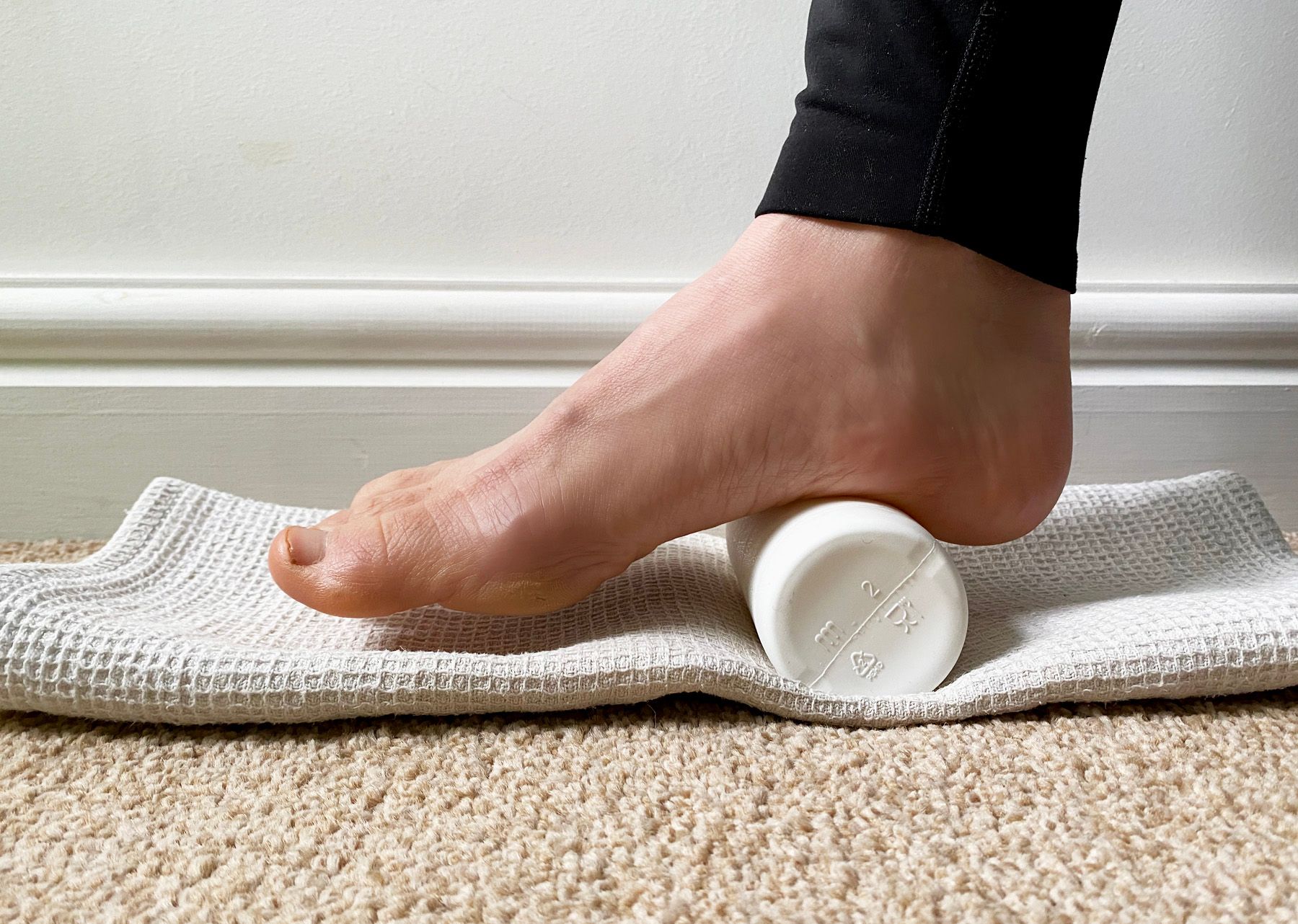
2 Load tendons
Like all tendons, the plantar fascia needs loading with specific exercises to stimulate repair. I was often prescribed eccentric exercises – loading the tendon while stretching it. An example of this is the downward movement of calf raises; I did these slowly and with extra weight to add resistance. I was also given isometric exercises – loading the tendon while keeping it still. I used a leg press machine in the gym for this, holding the plate with my forefoot for six seconds before switching sides, and repeating for several minutes.
3 Rear chain conditioning
This sounds technical but it is simple. Rear chain refers to the muscles on the back of your legs which work together in a chain – calves, hamstrings and glutes. Excessive stiffness in these muscle groups led to plantar fasciitis for me at least once. Therefore, I made sure to keep all these muscles well-conditioned through stretches, strength & conditioning and massage. I also used a night splint to keep my calves stretched over night. Sleeping with a night splint takes a little time to get used to, but it drastically reduces morning heel pain.
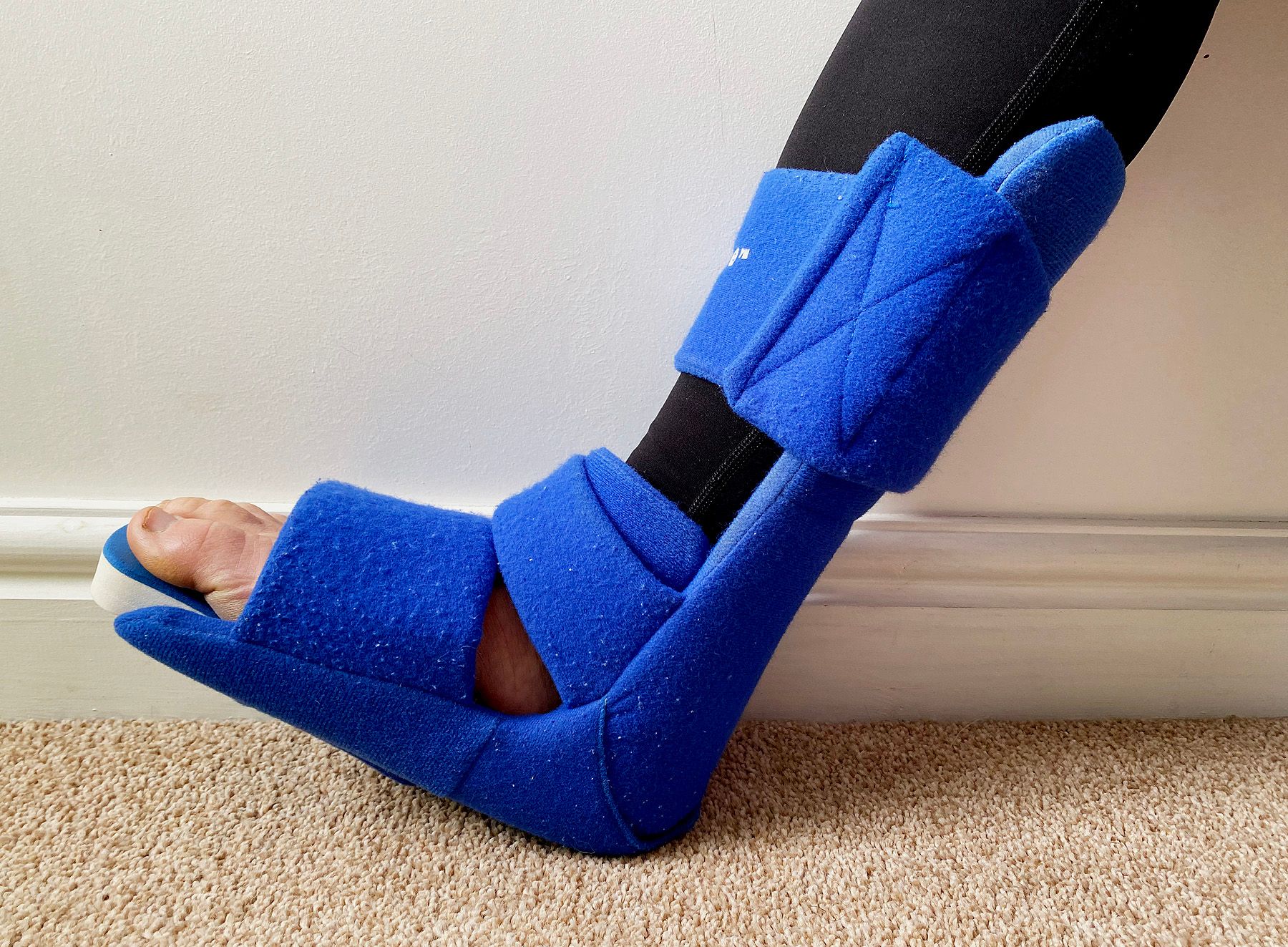
4 Look elsewhere for causes
It is easy to assume the cause of plantar fasciitis is in your feet since that is where the pain is. But injuries can easily arise because of dysfunction elsewhere. Glutes are always top of my list for possible causes of injuries because our modern lifestyles don’t help our glutes to work well. My right glutes have always been lazy and contributed to plantar fasciitis. So keeping them strong and activating well is essential.
5 Work at prevention
Avoiding the frustration of plantar fasciitis is always worth the effort. This means well-fitting footwear, for running and everyday wear. Be vigilant about sandals in summer and other very flat shoes. Keeping your feet robust and well-conditioned is a must. My article on foot and lower limb care has useful tips on how to do this. Foot massage with, for example, a golf ball, can help to reduce stiffness and improve mobility in your feet.

These relatively simple measures can work wonders to fix the dreaded plantar fasciitis. Sometimes, more specialist treatment may be necessary, such as shock wave therapy, an injection or even surgery. In my experience, the tips above can go a long way to curing and preventing it without the need for medical treatment.
Mara Yamauchi for World Athletics Be Active





